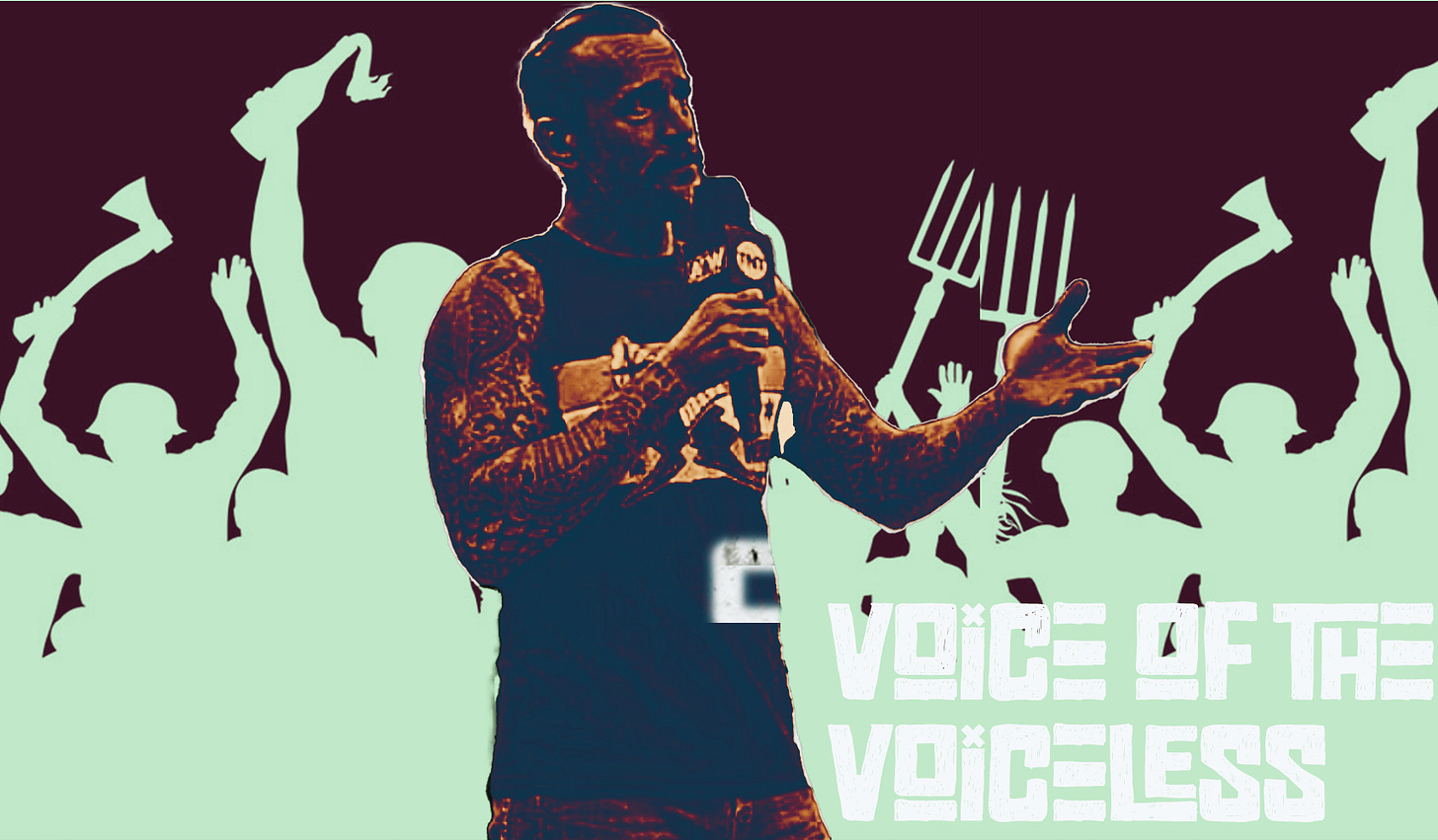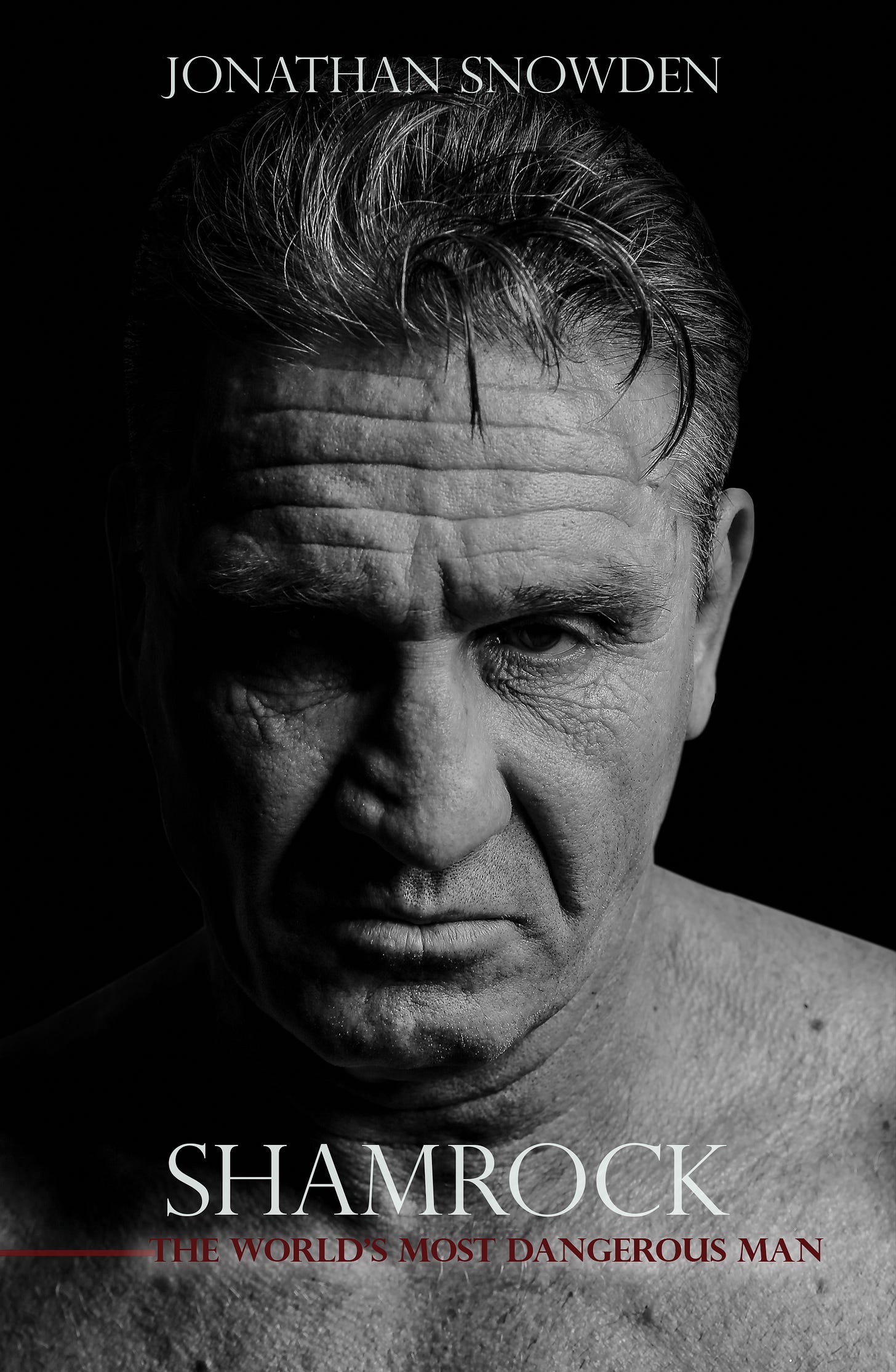Yesterday CM Punk was fired by All Elite Wrestling after a second backstage rampage, this time one that included his boss Tony Khan. Punk, who reportedly knocked down equipment during an attack on wrestler Jack Perry at AEW’s recent All In pay-per-view, then screamed and lunged at Khan himself, was fired “for cause”, an appellation that typically means his contract won’t be paid off and the company will cut ties with him completely.
Online, a collection of divorced, patchy-bearded 40-year-olds in black t-shirts were in an uproar. Writing from their sad one-bedroom apartments on the weekend they were scheduled to have the kids, they lit into the company and its fans, blaming everyone but Punk for his problems.
Everyone these days, they claimed, is soft and weak. A man, they said from their Ikea futons, stands up for what he believes in, even if it means violence. A true pro, these CM Punk fans claimed unironically, would never take oblique shots at their co-workers on a wrestling television show.
The consequences, they claimed, would be dire. Fans in Chicago would take over the AEW Collision event that night in Punk’s hometown, booing throughout and causing a scene. There might even be riots. AEW was well and truly cooked in America’s second city and the company would be in dire straits without Punk’s enormous and supposedly gargantuan “star power.”
None of this, of course, happened.
Fans initially booed Khan when he came out before the show to address the situation, but he eventually won them over, painting the picture of a wrestler unfit for even his admittedly unusual workplace. In a world full of angry middle-aged white men, upset about things not going their way every second of every hour, Punk’s violent temper-tantrums suddenly seemed a little less cute to all but the most terminally online.
Some mocked Khan’s claims of feeling unsafe. But anyone who has actually been around violence and understands its capacity to quickly flame up and burn too hot to control understood that a large man unable to regulate his emotions is a scary sight. It doesn’t take much to end up in the hospital or a slab at the morgue, especially when the attacker has no care for the many people trapped on the impromptu battlefield, people just doing their jobs, in this case trying to launch the biggest wrestling show of all-time on pay-per-view.
There was no widespread discontent on Collision. Maybe it will come at All Out. Perhaps it won’t come at all. Outside of Chicago, fans have mostly greeted Punk with more boos than cheers, despite great efforts on his part to be presented as a babyface even as he continued his aberrant behavior, attacking political foes after events and online.
The thing about AEW fans is that they are there for a good time. It’s a vibes crowd, one that wants to love the promotion and its wrestlers. These are fans engaged from the opening bell to the main event, people who know the deep lore of even the undercard wrestlers, in on the jokes and wanting to cheer until their voices go raw. These are not the kind of people who want to come to a wrestling show and be mean to others.
They are not a CM Punk crowd, no matter how many times they cheered him. On a DNA-level, they are built differently. The fact CM Punk and his people thought AEW fans would be shitty to everyone else on the show to assuage his perpetually damaged ego is a colossal misunderstanding of who we are. And it’s why this relationship was destined to fail.
Almost two decades ago now, Punk weaved himself into the fabric of the online wrestling community. He was the “voice of the voiceless” and avatar for the harder-hitting, workrate centric wrestling hardcore fans preferred. He went to WWE as an underdog with a chip on his shoulder, living a slogan MJF hadn’t invented yet “better than you, and you know it.”
Punk didn’t look or wrestle like a WWE star and that difference made him stand out. Despite the greasy hair and love handles and occasionally awkward attempts at mimicking athleticism, he got over as the alternative. Fans were discontent and unhappy about the wrestling product WWE was producing at the time. Punk became the face of that revolution.
His appeal was based more on what he wasn’t than what he was. He wasn’t Vince McMahon’s boy. He wasn’t a manufactured cartoon hero like John Cena. He was just a fan from Chicago (actually Lockport, a suburb Chicagoans would normally be quick to holler ISN’T REALLY CHICAGO) who wanted wrestling to return to something closer to sport than entertainment. CM Punk the wrestler was a compelling act. CM Punk the ideal, well, he was unstoppable.
In 2014, after nine long years of fighting his way to the top of WWE and never quite climbing that final rung on the ladder to grab the brass ring, Punk quit. Not just the promotion. Wrestling. For seven years, he was gone, more myth than man, a name to be chanted when things were particularly dire, but not a part of the scene. He did nothing to create the vision in his head or mentor young wrestlers or create something better than the WWE product he claimed to loathe. Instead he sat, seethed, and waited.
Eventually the Elite and AEW’s other founding fathers put their money (in Khan’s case literally) where their mouths were. They didn’t just pontificate about how they’d change wrestling—they went out and did it, often giving up lucrative deal elsewhere to help the startup grow. Punk, I can tell you from first hand experience, wasn’t a believer. He thought they’d fail and wanted no part of the venture.
Instead, they launched the revolution he’d only talked about. Khan provided a surprisingly robust historical perspective and an endless supply of money and connections. Chris Jericho and Jon Moxley provided the WWE sheen and star power. The Elite provided the energy, enthusiasm and modern style of work.
A new crop of stars rose with them, the Britt Bakers, Jack Perrys, Darby Allins and MJFs. Soon the company wasn’t just an idea—it was a going concern with multiple television deals and a crop of fans sprouting around the world.
This got Punk’s attention and he made his debut with the company on August 20, 2021, to raucous applause, a truly special moment.
The problem was, both on-screen but mostly behind the scenes, the old CM Punk act didn’t quite work anymore. He wasn’t an underdog or the voice of the voiceless. He was a multi-millionaire often throwing his weight around and demanding deference from wrestlers he believed should be beneath him, whether they’d successfully launched the company he worked for or not.
The idea of CM Punk, the real wrestler in a land of giant pretenders, didn’t work in a promotion built on wrestlers who could deliver high-end matches in the ring, matches that dwarfed even what Punk had managed in terms of complexity and degree-of-difficulty, requiring an athletic skillset that he didn’t quite possess.
I’d heard AEW wrestlers in private moments, even before Punk returned to the scene, gently mock the way he would proclaim himself a “locker room leader”, something akin to giving yourself your own nickname. His aggressive tendency to dispense wisdom, even when it wasn’t sought out or appreciated, rankled.
AEW was his vision in some ways. But, perhaps because he wasn’t the one to execute it, he couldn’t truly appreciate it. It became obvious, rather quickly, that CM Punk’s real vision for wrestling wasn’t about the best in-ring wrestlers getting deserved opportunities. It was about placing CM Punk on the throne—and so Punk became champion and lead character, at least when his failing body allowed him to make the towns. But even that wasn’t enough to appease him. Perceived slights were hard to let go and he eventually exploded in a fit of rage at the now-famous Muffin Press Conference, an event that started with him settling personal scores over an old lawsuit, emasculating Khan and eventually assaulting a number of people backstage.
Eventually Punk returned to the fold, but in a weird alternate universe where he had complete control. The company turned over its new Saturday show to him and it existed as an almost “AEW-adjacent” product. He reportedly banned his perceived political enemies from the Saturday Collision events and the company worked hard to create an environment where he could thrive despite his continued efforts to thwart all his backstage foes, including continued verbal attacks on the Elite.
Online, he brought the battle to dirtsheets he didn’t like, creating another front in his forever war. Dave Meltzer, a veteran reporter of more than 40-years whose work exposing wrestling’s behind-the-scenes machinations basically created an industry, was cast as little more than the Elite’s stooge, the recipient of leaks that he reported without scrutiny. Never mind that AEW was a promotion with almost no backstage drama reported to the dirtsheets prior to the arrival of Punk and his cronies. No, it was the Young Bucks who were supposedly the chronic leakers in Punk-land—certainly not Punk himself and his many proxies.
AEW was built as an alternative. It was wrestlers, fans and promoters coming together to embrace a different vision of wrestling. We were in it together. Punk’s insistence on division didn’t fit with this vision and ethos. There were elements of “us vs. them” in the AEW DNA. But his insistence on drawing lines, on positioning Colliders (a nickname for AEW Collision fans that never quite caught on) against fans of AEW Dynamite made it “us vs. us.” It was uncomfortable and the fanbase never quite bought in. Ratings stagnated early, even before football season started, and tickets for the Punk-centric Collision shows didn’t move like expected, even in Chicago. The show built around him was often only the fifth most popular wrestling show on television in a given week, much closer to being sixth than it was to entering the top three.
It was a toxic stew with fumes that were bound to eventually turn deadly. That he eventually exploded, once again, in rage, surprised absolutely no one who was paying attention. That it was in response to a Jack Perry comment about glass, one that only the most online of online fans would have recognized was connected at all to Punk, is funny but not shocking. When someone is that out-of-control, almost anything can set them off. Perry was just a target Punk felt comfortable enough bullying.
It could have been anyone.
At the end of the day, Khan has an obligation to the people backstage at AEW to provide a safe working environment, one where ordinary professional disagreements don’t indiscriminately turn into violent scenes. At this point, they have been lucky that no wrestlers or crew members have been seriously injured—but that can’t be guaranteed and eventually someone would have paid the price for the company’s lax discipline and poor safety standards if things continued like this.
Punk had to go.









This is probably the best analysis of the situation I've read anywhere thus far. Level-headed, entertaining and really on point. Kudos!
It’s just sad, I was a huge mark for punk in his wwe days but his refusal to have any humility will always be his downfall. Hopefully his exit can bring back the magic that was pre covid AEW. Who knows what’s next for Punk, maybe a one night return at 40? The WWE locker room might revolt if anything more than that. Great article!